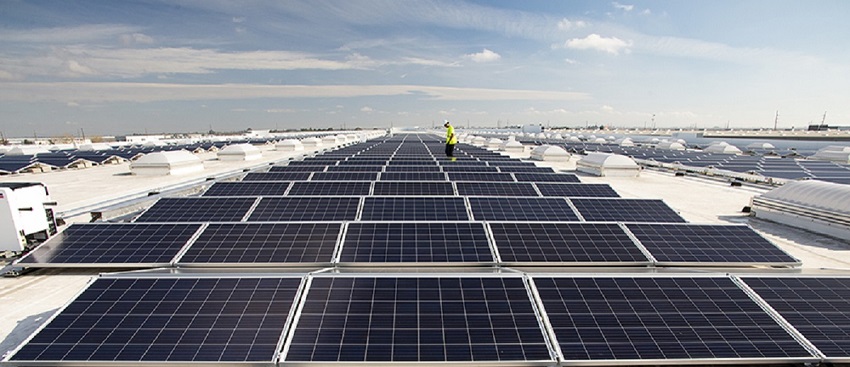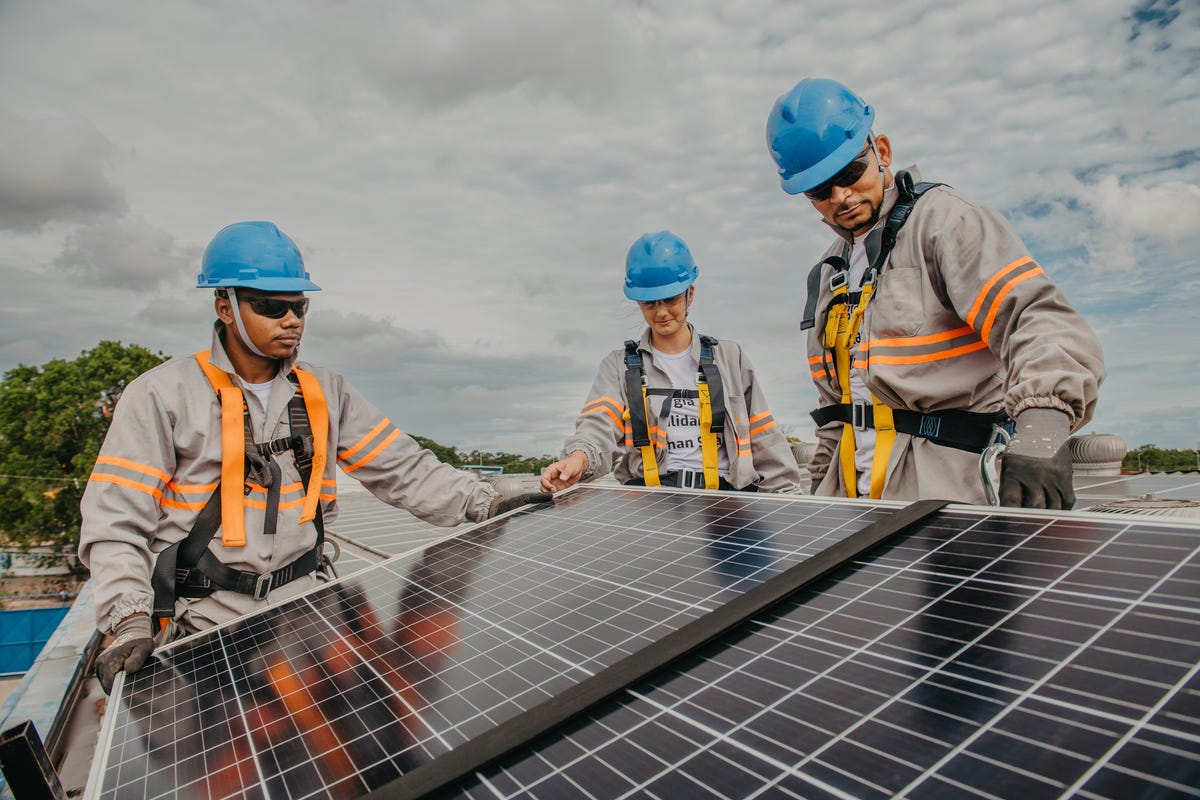Facts About Residential Solar Panels Virginia Uncovered
Facts About Residential Solar Panels Virginia Uncovered
Blog Article
Solar Installation Services Virginia: Lumina Solar Concentrates On Offering Advanced Photovoltaic Solutions For Residences And Businesses
History and Establishing
Have you ever wondered how a solar panel business springs from a mere stimulate of inspiration into a powerhouse of renewable energy? It frequently begins with a vision-- one fueled by a mix of development, decision, and a pinch of serendipity. The journey of many solar business mirrors the advancement of the innovation itself: from large, ineffective panels to streamlined, high-efficiency marvels utilizing the sun's bounty.
The Early Days
In the late 20th century, when solar power was still a specific niche idea, pioneers planted seeds for what would end up being an international movement. Picture a small workshop filled with curious engineers, tirelessly explore solar batteries. Their passion was palpable, typically driven by a desire to fight environment modification and lower dependence on fossil fuels.
One such anecdote is about a founder who, influenced by an outdoor camping trip, understood that even in remote locations, the sun could power vital devices. This easy observation stimulated a company's mission to democratize more info access to tidy energy.
Establishing Concepts

- Development: Continually pushing the borders of solar technology to enhance efficiency and resilience.
- Sustainability: Devoting to eco-friendly manufacturing and reducing carbon footprints.
- Accessibility: Making renewable resource solutions cost effective and useful for daily users.
Milestones in Development
| Year | Secret Occasion |
|---|---|
| 1985 | Company established in a small garage, focusing on research study and advancement. |
| 1995 | First business solar panel item launched, getting regional attention. |
| 2005 | Expanded to global markets, welcoming international sustainable energy objectives. |
| 2015 | Introduced cutting-edge photovoltaic panel technology with boosted energy conversion. |
Isn't it fascinating how these incremental steps, typically ignored, form the energy landscape today? The solar panel business story is not practically innovation; it's about a relentless quest for a brighter, cleaner future.

Developments in Photovoltaic Panel Technologies
Ever noticed how some photovoltaic panels shine brighter and last longer? It's not magic; it's the science of photovoltaic effectiveness. Modern solar panel business invest heavily in innovations like bifacial cells, which capture sunlight from both sides, increasing energy harvest without expanding roofing system space. Have you ever questioned why some panels carry out better on cloudy days? That's due to advances in thin-film solar technology, which thrives under diffused light conditions.
Item Variations Tailored to Special Needs
One size never fits all. Solar panel service providers now use:
- Monocrystalline panels for maximum effectiveness and sleek aesthetics, ideal for space-constrained roofs.
- Polycrystalline panels, which provide an affordable option without compromising excessive output.
- Building-integrated photovoltaics (BIPV), merging solar tech perfectly into architectural components like windows and exteriors.
Picking the best item isn't almost in advance expense; it's about matching your environment, energy objectives, and long-lasting cost savings. Homes shaded by trees need panels that stand out in low-light circumstances, something lots of neglect until energy expenses climb unexpectedly.
Technical Tips for Optimum Choice
- Examine the temperature level coefficient-- lower worths indicate panels lose less efficiency on hot days.
- Search for panels with boosted anti-reflective finishes to take full advantage of light absorption.
- Think about the panel's warranty not simply for problems, but for ensured power output over decades.
- Don't ignore the value of the inverter innovation paired with the panels; it can make or break your system's efficiency.
Beyond Panels: Emerging Patterns
Think of photovoltaic panels that change their angle instantly to go after the sun-- tracking systems are ending up being more available, increasing yield considerably. Or solar tiles that blend undetectably into your roofline, changing your home into a silent, self-sufficient power generator. These innovations are improving what a photovoltaic panel company provides-- not simply items, however incorporated energy solutions.
Market Presence and Global Operations
Ever wonder why some solar panel companies seem to grow up in every corner of the world while others barely make a ripple? The difference lies not just in technology however in mastering the art of navigating varied markets. Broadening worldwide is like planting seeds in various environments-- you must comprehend each environment's unique conditions to thrive.
Take, for example, the detailed dance of logistics and supply chain management. Shipping panels midway throughout the world isn't simply about range; it's about timing, custom-mades, tariffs, and adapting to regional need changes. A company with robust international operations expects these variables, guaranteeing panels show up on schedule without inflating expenses. This foresight is no little accomplishment and typically separates industry leaders from followers.
Key Strategies for Expanding Market Existence
- Localized production: Establishing production centers near target audience decreases shipping hold-ups and import complexities.
- Strategic partnerships: Working together with local firms accelerates market penetration and develops trust.
- Adaptive item design: Tailoring solar panel tech to weather, sun intensity, and facilities subtleties enhances performance and approval.
What about the human element? Solar panel business operating internationally should reconcile cultural differences and regulatory nuances without losing sight of their core objective. For example, what operate in a sun-drenched desert might fail in a damp coastal region. Often, the most ingenious option is simply listening-- taking in local insights to fine-tune technology and technique.
Specialists often encourage a phased rollout instead of a shotgun growth. Why risk overextension when determined growth develops sustainable momentum? Scaling carefully implies balancing ambition with operational durability - Solar Panel Company. After all, in the race for sustainable energy supremacy, persistence can be as valuable as speed
Ecological Effect and Sustainability Practices
When photovoltaic panels initially emerged, many assumed they carried absolutely no environmental baggage. The reality is more nuanced. The production of photovoltaic cells involves rare earth metals and energy-intensive processes, which can leave a substantial carbon footprint before the panels even reach roofs. Yet, the real environmental cost depends heavily on the sustainability practices utilized by the solar panel business throughout the lifecycle of their products.
How often do we stop briefly to consider what happens to solar panels at the end of their useful life? Unlike batteries or electronic devices, solar panels can last 25-30 years, however disposal and recycling pathways remain underdeveloped in numerous areas. A company dedicated to decreasing environmental harm will have a robust plan for recycling photovoltaic materials, salvaging important silicon, glass, and metals to avoid garbage dump build-up.
Secret Sustainability Methods
- Making use of low-impact production methods that reduce water and energy intake.
- Executing closed-loop systems to recycle production waste back into brand-new panels.
- Engaging in transparent supply chain audits to guarantee ethical sourcing of raw products.
- Creating panels for simpler disassembly to assist future recycling efforts.
It deserves noting that some solar companies have actually pioneered ingenious techniques, such as integrating naturally degradable parts or utilizing less harmful chemicals during fabrication. This not only decreases ecological strain however also sets a precedent for the industry. The question remains: can the solar market truly pivot towards a circular economy model without compromising effectiveness or price?
Professional Tips for Examining Sustainability
- Inquire about the company's dedication to carbon-neutral manufacturing and whether they balance out emissions.
- Investigate if they partner with accredited recycling facilities committed to photovoltaic panel waste.
- Try to find transparency reports detailing environmental impacts and sustainability objectives.
- Consider the durability and service warranty of panels as an indirect measure of resource efficiency.
In the end, going with solar power needs to indicate more than simply slashing electrical energy expenses; it has to do with supporting a future where energy is gathered responsibly and waste is thoughtfully handled. Photovoltaic panel companies that welcome this philosophy not just illuminate homes but also cast a brighter light on sustainable innovation.
Report this page